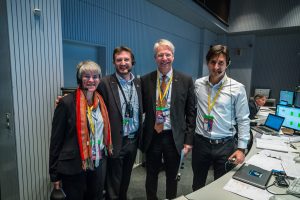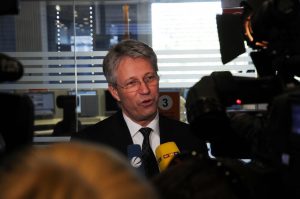Editor’s note: Thomas Reiter is an ESA astronaut and former Director of Human Spaceflight and Operations. Today, he serves as ESA’s Interagency Coordinator and Advisor to the Director General.

ESA’s Director of Human Spaceflight and Operations, Thomas Reiter (second from right) with members of the mission control team in the Main Control Room at ESOC, 3 December 2015, for the launch of LISA Pathfinder. Credit: ESA/K. Siewert
During these 50 years the colleagues at ESOC have operated more than 80 satellites. Most of these missions were ‘firsts’, ranging from satellites in Earth orbit to interplanetary probes. Not a single mission has been lost, and in some very spectacular cases satellites were rescued after being in an off-nominal situation. A wealth of expertise in all areas of building the ground segments and operating satellites has been acquired by teams with talents from all over Europe. This expertise is unique in Europe.
I am amazed, first of all, with the team spirit which I experienced at ESOC. Running all those unique missions glues together colleagues from all over Europe, ensuring mission success. This became impressively apparent in November 2014, when Philae touched down on the surface of Comet 67/P Churyumov-Gerasimenko just three seconds after the calculated time – absolutely fascinating – and all happening more than 500 million kilometres from Earth!
ESA astronaut Thomas Reiter wearing ESA’s Eye Tracking Device during his six-month Astrolab mission to the International Space Station in 2006. Credit: ESA/NASA
Fifty years from now, in the course of developments in the field of artificial intelligence, I expect an increasing autonomy of satellites. This will affect the size of future control teams and shift their tasks. In any event, we need to lead this trend.
The most daring mission in the next ten years? In terms of upcoming missions, I believe that a smooth landing of the ExoMars rover on the surface of Mars will be a huge challenge, and I have full confidence that we learned all we can from the Schiaparelli lander.
In more general terms I believe that the adaptation of ESOC and all our colleagues to the future demands of operations is a daring project, but I have no doubts that this will be achieved.


Discussion: no comments